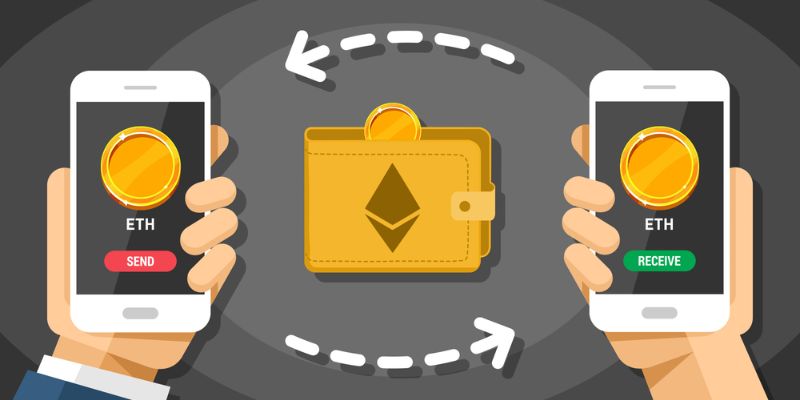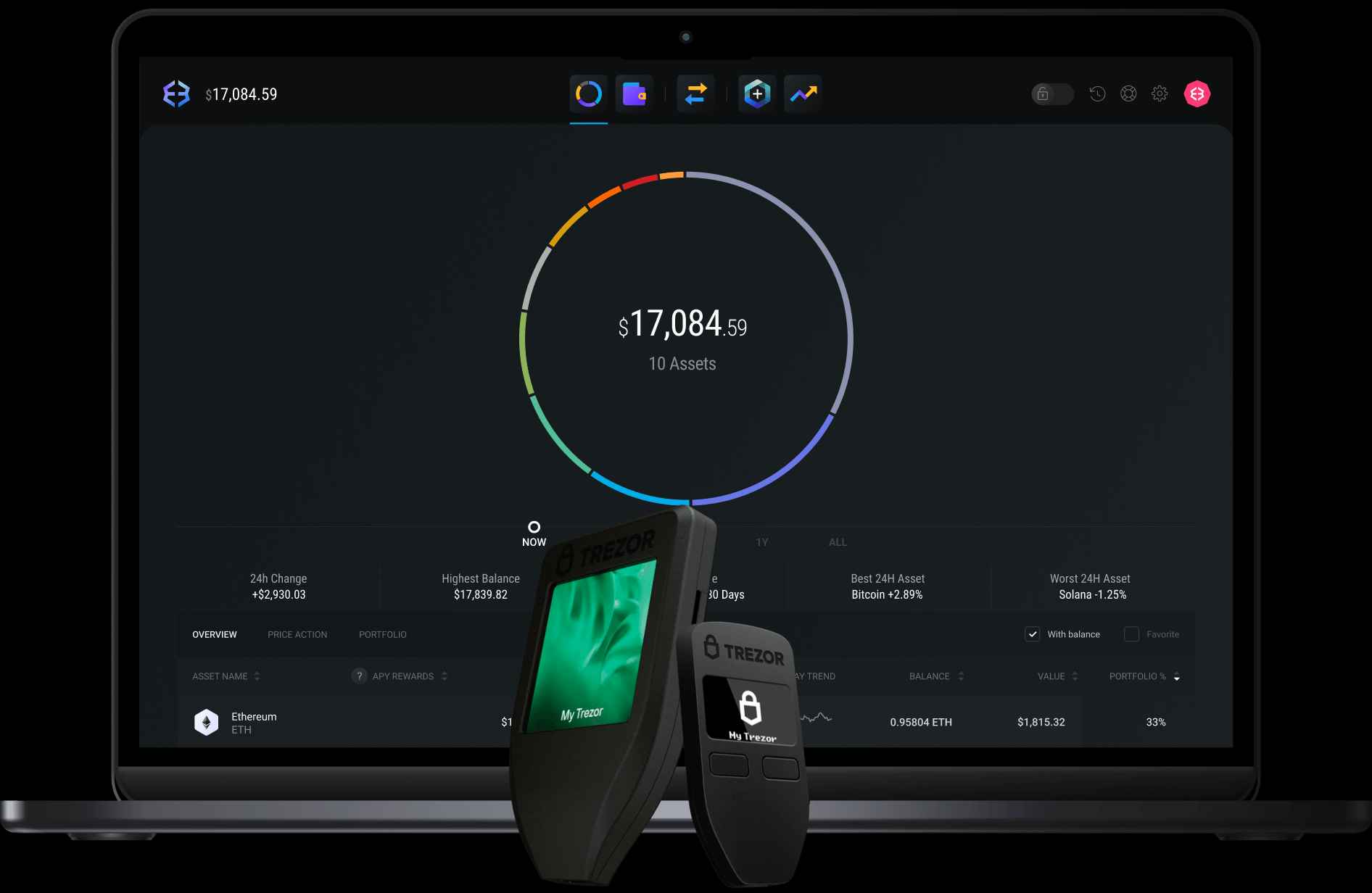How to Secure Your Crypto Wallet: Foolproof Strategies for Digital Safety
In today’s digital gold rush, knowing how to secure your crypto wallet is key. You wouldn’t leave gold nuggets lying around, would you? Your digital coins need the same, if not better, safety. We dive into cold storage and why hardware wallets might be the Fort Knox you’re looking for. Get ready for a crash course on strong passwords and that second layer of defense: multi-factor authentication. Stick with me, and you’ll turn your wallet into a digital fortress, keeping those crypto treasures safe and sound.
Understanding the Essentials of Cryptocurrency Wallet Protection
The Role of Cold Storage and Hardware Wallets
Cold storage is key for keeping your crypto safe. It means storing your crypto offline. Wallets not connected to the internet are far from hackers. So, your coins stay safe. Hardware wallets are perfect for this. They are physical devices, like USB drives. They hold your crypto and can be locked away. A hardware wallet lets you keep your coins secure and portable. You can carry it around safely, or lock it up.
One great thing about hardware wallets? They keep your private keys safe inside. Private keys are like secret codes that let you spend your crypto. No one can move your coins without them. So, hardware wallets make sure that only you can access your coins. It’s like having a secure bank in your pocket.
Safeguarding with Strong Password Policies and Multi-Factor Authentication
Now, let’s talk about passwords and extra security steps. Using strong passwords is a must. They are the first line of defense. Think of your password as a guard. It keeps unwanted visitors out. Make your password long and mix up letters, numbers, and symbols. It should be something no one else can guess. Don’t use your birthday or your pet’s name!
Multi-factor authentication (MFA) is another shield. It’s like a second door you need to open. Even if someone guesses your password, they can’t get in without the second key. MFA asks for something else, like a code from your phone. This code changes every time. So, it’s super tough for thieves to get your crypto.
Think of MFA like a combo. You need the right dance steps to get past the bouncer. Without them, you’re not getting into the club. This extra step keeps your digital wallet even safer. It’s like having a double-locked safe. It might take a moment longer to open, but your treasure stays secure.
In summary, keep your crypto off the internet with cold storage and hardware wallets. And always use strong passwords and MFA. These steps make a big fortress around your digital treasure. Your coins deserve the best security, so don’t skimp on these methods!
Reinforcing Your Digital Wallet Security Measures
Backup Strategies and the Handling of Private Keys
You’ve got a crypto wallet. You want to keep your coins safe, right? Start here – back up your wallet. Think of it as a safety net. If your computer crashes or you lose your phone, you don’t lose your money. Simple yet vital.
Now, your private keys are like the key to a treasure chest. Keep them safe, and you keep your crypto safe. Handle them carelessly, and you’re asking for trouble. So, write them down. Keep them locked away. Never, ever share them. No one needs them but you.
What about making backups? Do it often. Secure them with a password. For this, use something you can remember, but others can’t guess. Maybe your great-aunt’s middle name plus your favorite year? Just an idea.
Always keep multiple backups. Think about different places, too. Maybe a home safe and a bank safe deposit box. It’s like not putting all your eggs in one basket. And hey, if you have a loved one you trust? Let them know where to find your backups. Just in case.
Implementing Encryption and Secure Crypto Storage Practices
Next up, encryption. This is your digital armor. Encrypt your wallet data to keep hackers out. If they can’t break through the armor, they can’t steal your coins. Make sure your passwords are solid here, too. And change them from time to time. Like how you get new shoes when the old ones wear out.
For the safest crypto storage, think ‘cold storage.’ This means storing your wallet offline. Like on a USB stick or a hardware wallet. Offline means out of reach from the bad guys. It’s a strong move.
You’ve got your mobile phone, right? Do you ever use it for crypto? Be careful with public Wi-Fi. It’s not safe for handling your digital money. Stick to secure internet connections when you’re making transactions.
Updating your wallet software is like getting a stronger padlock. Always stay on top of updates. The guys who make the software? They are always fixing things. So, when there’s a new version, grab it. It’s like getting a free security boost.
Enable all the recovery options your wallet offers. Write down your seed phrase. Do it neatly; no mistakes. Lock it up tight. This phrase can get your wallet back if you lose access.
Remember, you want your money to stay yours. So, keep those keys offline when you’re not using them. Trust wallet providers that have a good name. And watch out for tricks trying to scam you.
Learn about all this stuff. Get comfy with it. Then tell your friends. Security’s not just locks and alarms. It’s knowing what to do and doing it right. Keep up and stay safe. Your future self will thank you for it.

Practices to Avoid Potential Security Threats
Strategies to Thwart Phishing Attacks and Recognize Secure Wallet Apps
You love your crypto wallet, right? Keep it safe! Phishing is like a sneaky thief trying to trick you into giving away your wallet keys. But don’t worry, I’ll show you how to beat them at their own game. First, always check that an email is really from who it says it is. Clicked a link and it looks a bit off? Stop! That’s a red flag. Only download wallet apps from places you trust, like the official app store. And hey, got a weird message asking for your keys? Never give them out.
Keep your eyes peeled for odd emails and links. Phishing tries to fool you with fake crypto sites. Avoid this by double-checking URLs and never sharing key info. Phishing emails often have spelling mistakes, weird addresses, and ask for your private keys, which are big no-nos. Real companies never ask for your keys. When you spot a fake, report it. That helps everyone.
Ensuring Safe Internet Browsing and Transaction Verification
Now, let’s talk surfing the web. We love the internet, but it’s also full of sharks. To stay safe, use a secure connection, like your home Wi-Fi. Public Wi-Fi is a no-go for crypto stuff – it’s too easy for hackers. If you have to, use a VPN to keep your browsing safe. Ready to make a crypto move? Verify it. If a friend says they changed their address, double-check with them. Better safe than sorry!
Public Wi-Fi is bad news for your wallet. Hackers love it. Use your own internet or a VPN instead. When you’re about to send crypto, confirm everything first. Triple-check wallet addresses, especially if they’re new. And always do transactions on a secure network. This helps stop hackers from grabbing your coins.
That’s the scoop on keeping your crypto out of reach from the bad guys. Use your smarts, stay alert, and you’ve got this. Remember, staying safe isn’t hard. It’s all about making good choices, like choosing secure networks and verifying every move. Follow these tips, and your wallet will thank you!
Staying Ahead with Advanced Security Protocols
Embracing Blockchain Security Fundamentals and Regular Software Updates
Blockchains are tough nuts to crack. They rely on strong math and careful code. But folks like us using them have to stay sharp too. Like forts in old times, we can’t leave our crypto2 castle doors open, right? We must keep our wallet software fresh and updated. Why? Because those updates fix holes that sneaky hackers could slip through. Updating wallet software is a must. It’s simple but a game-changer.
So, picture this: A new update pops up. What do you do? Hit “update” quick. It’s your digital armor getting stronger. Keeping software up-to-date may seem dull, but it’s your wallet’s bestie for staying safe. Don’t forget — checking for updates should be part of your routine, like brushing your teeth. Missed a software update? Don’t sweat it. But make it your goal not to miss next time.
Leveraging Biometric Features and Anti-Malware Solutions for Enhanced Protection
Your face and fingerprint? They’re keys that only you have. Cool, right? Many phones and tablets have this tech. It’s called biometrics. When it comes to digital wallets, biometrics are like magic guards. They use your unique features to lock others out. This is biometric security features shining bright.
Biometrics are fab, but what about mean software that can mess up your wallet? That’s where anti-malware jumps in to save the day. Think of it like a superhero for your wallet. Anti-malware for crypto wallets watches out for bad stuff on your device. It hunts for sneaky software that tries to swipe your coins. Always have some kind of anti-malware on guard. It’s like having a big, friendly dog watching over your house.
Here’s the low down on safety moves. First, biometrics — use them if you’ve got them. It’s a no-brainer for easy safety. And anti-malware? It’s a digital shield. Goes hand in hand with biometrics. A dynamic duo. With both on your team, even if one guard snoozes, you’re not losing.
Keeping ahead means playing it smart. Why take risks if you don’t have to? Make life hard for the bad actors. Lock down your virtual treasures tight. Stay sharp, stay safe, and remember, in the crypto kingdom, the best defense is a solid offense. And that offense is staying ahead with the latest in safety tech.
To wrap things up, it’s clear that protecting your cryptocurrency wallet is no small task. From choosing cold storage and setting strong passwords to backing up key information and updating software regularly, every step is crucial. Don’t fall prey to phishing scams; always double-check the apps and sites you use. Use encryption, secure your internet browsing, and don’t shy away from biometric security measures—they’re your friends in this high-tech world. Stay vigilant, keep your digital treasure safe, and you’ll navigate the crypto universe with confidence. Remember, in the realm of cryptocurrency, your security is as solid as the measures you take to maintain it.
Q&A :
How can I enhance the security of my crypto wallet?
Securing your crypto wallet is essential to protect your digital assets from unauthorized access and cyber theft. You can enhance your wallet’s security by enabling two-factor authentication (2FA), using a hardware wallet to store your private keys offline, keeping your software up to date, using strong and unique passwords, and being mindful of phishing attempts. Regularly backing up your wallet can also ensure you retain access to your funds in case of hardware failure or loss.
What are the best practices for keeping a cryptocurrency wallet safe?
The best practices for keeping your cryptocurrency wallet safe include employing a combination of robust security measures such as:
- Using hardware wallets for storing significant amounts of cryptocurrency.
- Implementing multi-signature protocols, which require multiple approvals before transactions can be completed.
- Regularly updating your wallet’s software to the latest version.
- Never sharing your private keys or seed phrases with anyone.
- Avoiding using public Wi-Fi when accessing your wallet and carry out transactions through secure, private connections.
Are hardware wallets more secure than software wallets for cryptocurrencies?
Yes, generally, hardware wallets are seen as more secure than software wallets. Unlike software wallets that are stored on a computer or mobile device and are susceptible to malware and hacking, hardware wallets keep your private keys offline on a physical device. This method, known as “cold storage,” is less vulnerable to online threats and makes unauthorized access to your digital currency far more challenging.
What steps should I take if I suspect my crypto wallet has been compromised?
If you suspect your crypto wallet has been compromised, take the following steps immediately:
- Disconnect your device from the internet to prevent further unauthorized transactions.
- Transfer your remaining funds to a new, secure wallet.
- Check your device for malware and ensure your antivirus software is up to date.
- Change all your passwords and review your wallet’s transaction history for any unauthorized activity.
- Contact the wallet provider for additional support and guidance.
Can enabling two-factor authentication (2FA) protect my cryptocurrency wallet?
Yes, enabling two-factor authentication (2FA) adds an extra layer of security to your cryptocurrency wallet. With 2FA, even if someone obtains your password, they still require a second form of verification—usually a code sent to your mobile device or generated by an authenticator app—to access your wallet. This makes it significantly harder for attackers to gain access to your digital assets.




